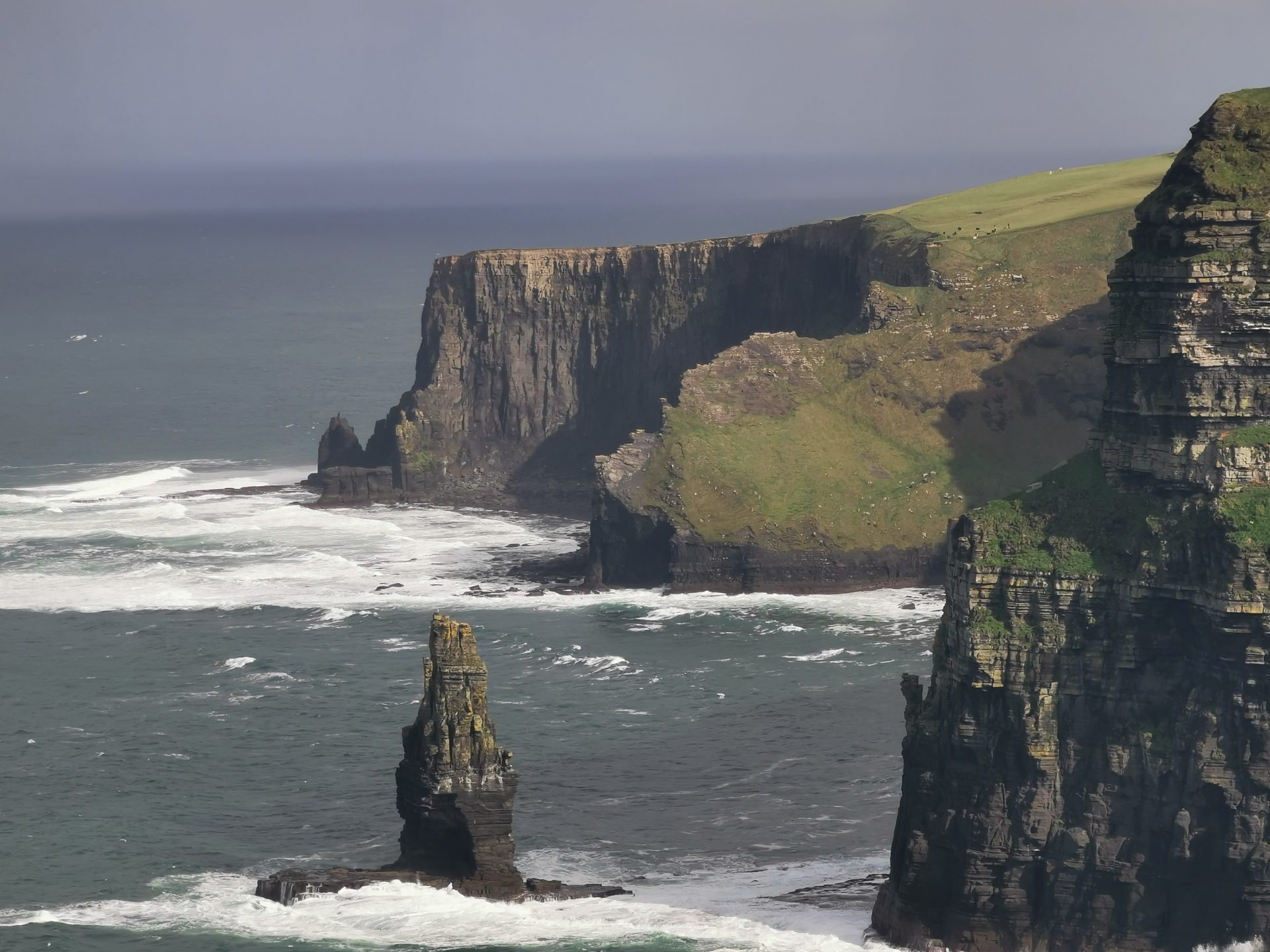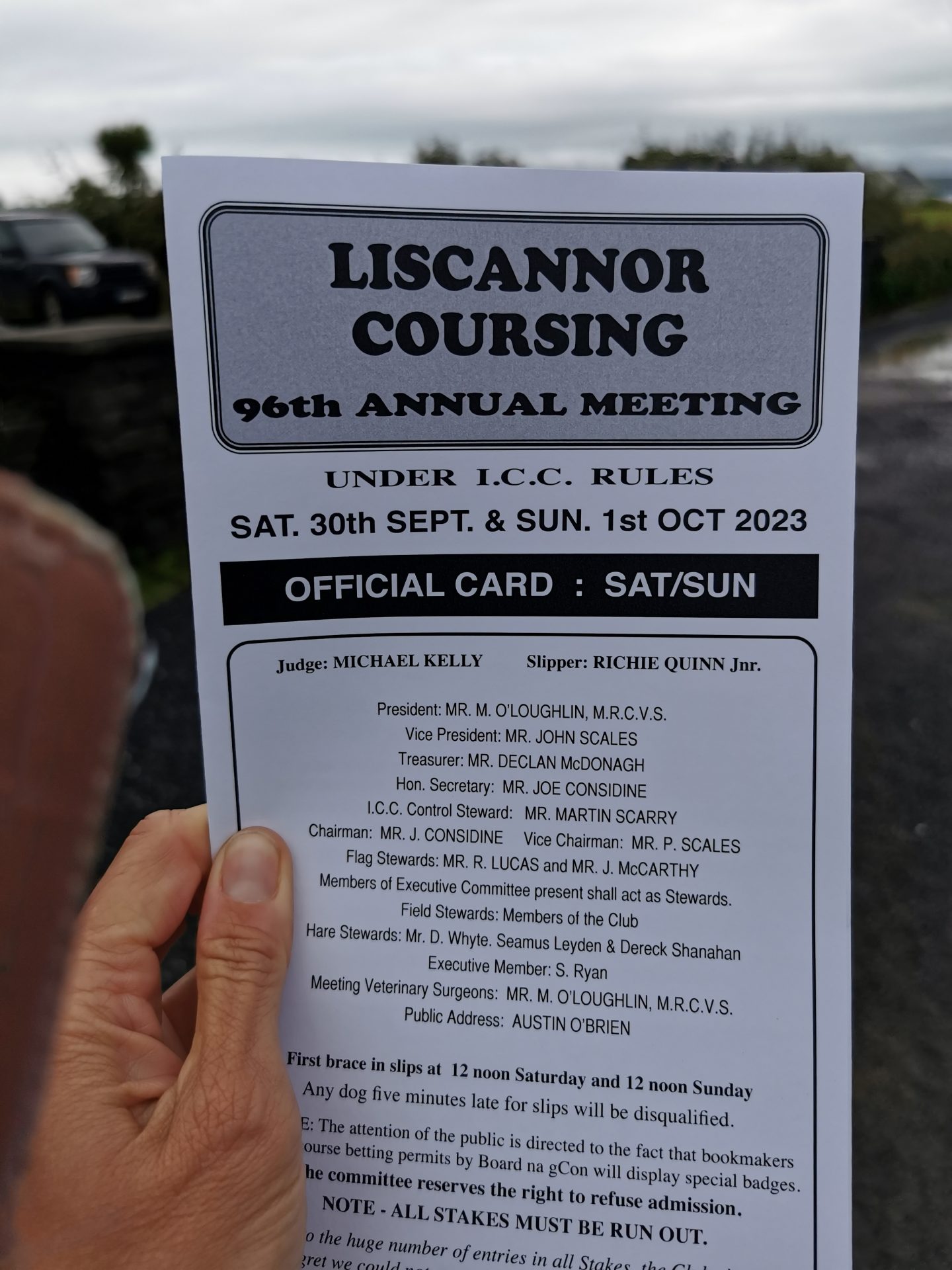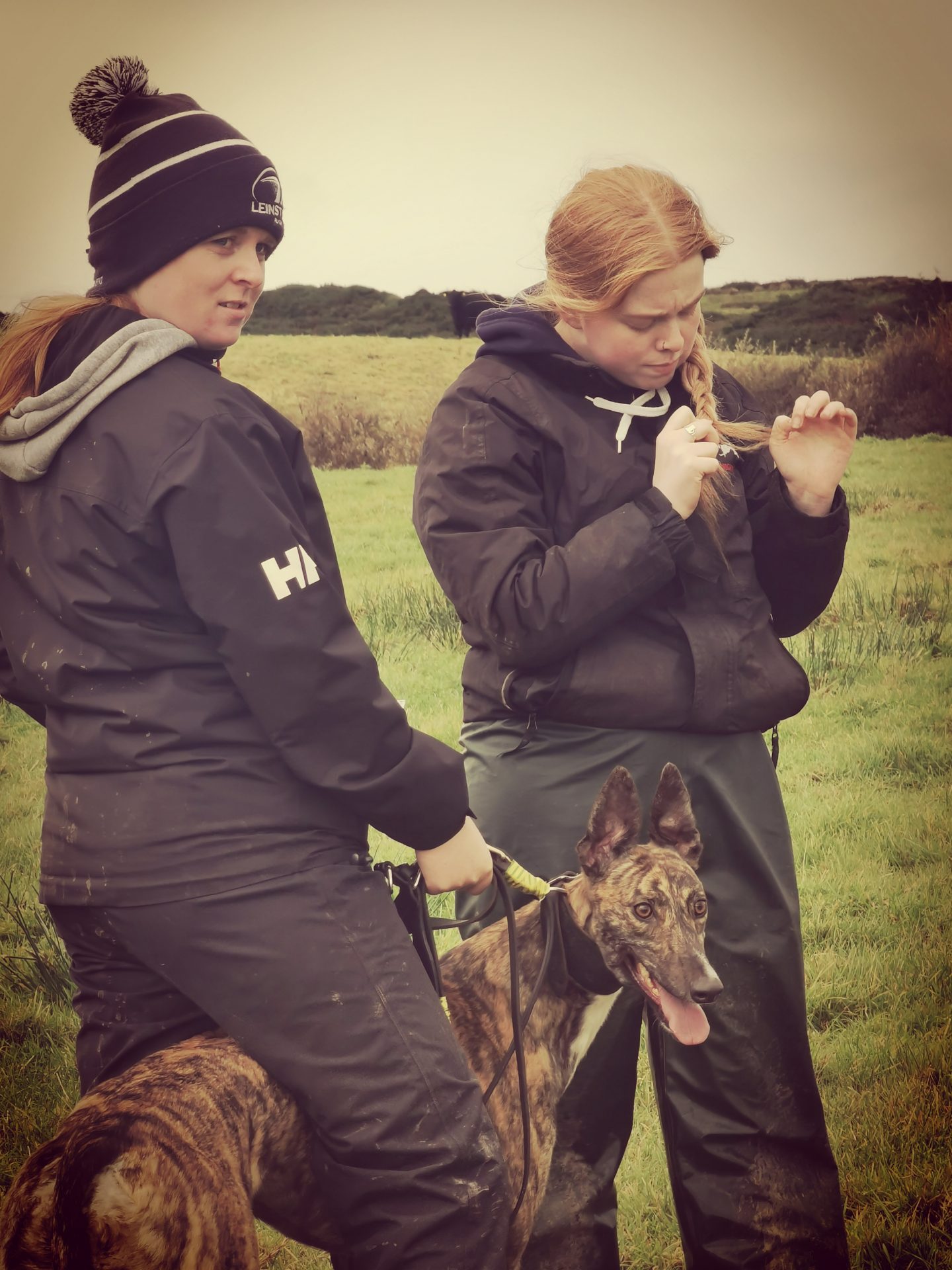The biggest attraction in Clare is the mighty Cliffs of Moher. In the late afternoon we’re looking for a parking place. The first possibility, which we decline, is a car park where the owner, sitting in a solitary shed, wants 25 euros to park on his scrap of land without a view. We drive on and park up, for free, outside a sports field in the village of Liscannor, about half a mile from the ocean where there’s a good walk along a coastal path to the cliffs and beyond to Doolin village. Dinner is an oven ready meal and we’re in bed by 9pm. Gusting winds and heavy showers shake and rattle the van overnight. Towards dawn, the call of nature finds me outside where there’s a full moon slipping in and out of view behind scudding silver lined clouds. I have strange but not unpleasant dreams: one of my ancestors is an octopus and I crave seafood and a warm bath, both quite prescient subconscious desires.
At 10am the next morning the rain stops and there’s another bright clear rainbow arcing in a blue sky. It’s eleven miles to Doolin; the first and final three miles of the coastal path alongside the crashing blue Atlantic ocean are unspoilt and dramatic. But half way to Doolin is a vast visitor centre and car park, the size of a small airport terminal. And a mile either side of this, the trail is hideous, with hundreds of visitors corralled onto a narrow path. This setup despoils the very thing it’s designed to celebrate. Despite this, it’s a great coastal walk in the sunshine, and as it’s eleven miles long the views of the cliffs are constantly changing.


I recall a previous visit to Doolin. In 1994, I visited the local bookshop and Irish record shop where I bought discs by Aftan, Christy Moore, Planxty, and Horslips (I still have them). Inevitably, the record shop has closed but the bookshop is still there. We’ve no time to linger today because, right now, we have another mile to walk to the bus stop for the bus back to Liscannor. The bookshop owner directs us there and informs us that the 17.05 bus will arrive at about 17.20, which it precisely does.

This evening, at Vaughans Anchor Inn in Liscannor we eat seafood chowder with fresh wheaten bread before returning to last night’s parking for another windswept night outside the sports field. In these conditions, the van is the perfect refuge, particularly so with a very good book. I’m reading the last book and bittersweet memoir of one of my favourite travel writers; Jonathan Raban, wha sadly died this year. This newly published memoir is really two stories massaged into one narrative. The first is about illness and recovery – in 2012 he suffered a stroke which left him lopsided, drooling, unable to walk. The second is an account of his parent’s marriage and his father’s experiences as a British soldier in Dunkirk, Italy and Palestine during and after World War II. It really is a very good read.
The next morning under a heavy leaking sky, I’m boiling the kettle for morning tea next to a couple of sodden young lads selling tickets from the back of a small van. It’s Saturday morning and I’m thinking Gaelic football or hurling. I ask them what’s happening today. ‘Hare Coursing,’ says one of them. I ask if we can watch. ‘Sure,’ he says. ‘Starts at 12 o’clock.10 euros to get in. Bring wellies, it’s muddy.’ ‘See you at noon.’ I tell them.

Ireland can be shockingly expensive. We drive the short distance into Liscannor for breakfast where I spot a bakery. The breads and cakes look great. We order a sausage roll, a small quiche slice, a pain aux raisin, a brownie and two small coffees. Total cost 27 Euros, which feels like a ripoff.
We pay our 20 Euros and trudge across a car park full of vans and 4X4s. The mix of vehicles suggest a diverse crowd of tinkers, farmers and well heeled gentry. We cross a soggy field past a bookie’s stall and a chip van to another muddy field overlooking the ocean. Here, scattered about, are scores of young greyhounds held on tight leashes by their hopeful, enthusiastic owners. There’s a hare run, leading past a greyhound starting pen, that bears right leading into a rising field, where it levels out at a canvas fence and a short stretch of grass, before an artificial hedge and a funnel leading to the hare’s refuge and escape.
I’m clueless about the sport so I pick out a friendly looking face and ask him how this works. ‘This is the first meet of the season.’ he tells me. ‘The hares were captured from the wild last week and the greyhounds are about 18 months old. Dis is all new to them too!’
‘When the whistle blows the hare will be released. When it’s about 200 metres ahead of the muzzled hounds, they’ll be let go – bitches this morning, dogs this afternoon. See the fella there in front of us in the red hunting jacket and breeches, on the horse. He’s the judge. Each of the two greyhounds wears a scarf – one red, one white. The first dog to turn the hare or the one closest to it when it disappears under the canvas fence at the top of the field is the winner. The judge will raise a red or white flag to signal who’s won. If the dogs mess up and wander off course, the run will be declared void.

The whistle blows and I see the hare streaking up the field. The greyhounds are released. The hare is fast but the greyhounds gain on it very quickly. ‘Go wan, yrrrrr, yrrrrr, yaaaa.’ the punters shout encouragingly. The hare turns ninety degrees near the fence and Red is right behind it. It turns again and escapes under the canvas fence. Red wins. The next few heats are decisive. Then two greyhounds seem to ignore the hare, veer off course, and refuse to be caught by their handlers, holding up proceedings for ten minutes. A void heat. The hare that comes after this is caught by the hounds, one of which punches it to the ground and tosses it into the air. An official rescues it but we can see that he efficiently breaks its neck, killing it instantly.
Following Irish Coursing Club rules all today’s hares will be released back into the wild on Monday. Some injured, most traumatised.
By lunchtime we’ve seen enough. It’s great to see the rural community enthusiastically gathered with their greyhounds for what is clearly a very popular rural sport. But it’s very hard on the hares and what happens to slow and ageing greyhounds? We leave with mixed feelings. Having no vested interest in the sport I don’t think I’d visit another meeting.
For the next stage of our Irish journey please visit Cycling in Connemara and into Mayo.